Talk at "The visual phantom illusion revisited" (Thematic Session)
Exhibition Hall E204, July 25, 2016, 14:30-16:00
31st International Congress of Psychology (ICP2016), Yokohama, Japan)
Visual phantoms and perceptual transparency
Akiyoshi Kitaoka (Ritsumeikan University, Kyoto/Osaka, Japan)
since July 5, 2016
Dark phantoms
(stationary phantoms)
When the luminance of the occluder is the lowest luminance of the grating, dark parts appear to be continual in front of the occluder.
Tynan, P. & Sekuler, R. (1975). Moving visual phantoms: A new contour completion effect. Science, 188, 951-952.
Genter, C. R. II. & Weisstein, N. (1981). Flickering phantoms: A motion illusion without motion. Vision Research, 21, 963-966.
Gyoba, J. (1983). Stationary phantoms: A completion effect without motion and flicker. Vision Research, 23, 205-211.
Light phantoms
(stationary phantoms)
When the luminance of the occluder is the highest luminance of the grating, light parts appear to be continual in front.

(When the cursor is placed on this image, the occluder becomes dark)
Sakurai, K. & Gyoba, J. (1985) Optimal occluder luminance for seeing stationary visual phantoms. Vision Research, 25, 1735-1740.
Dark and light phantoms
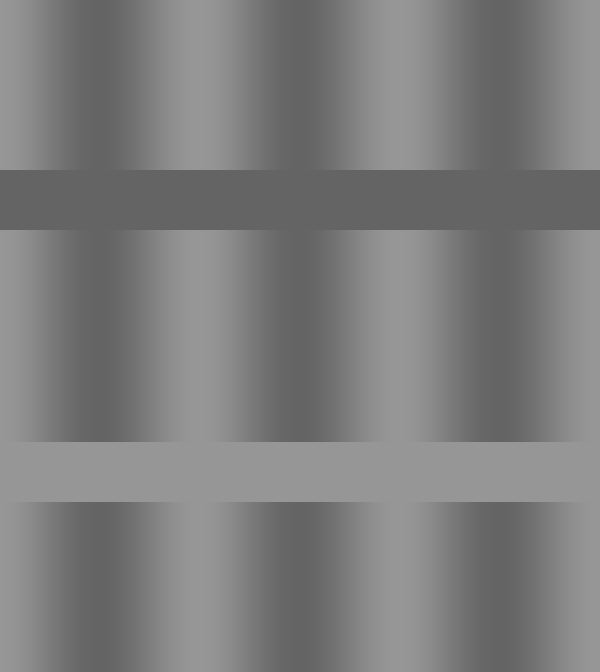
Visual phantoms depend on the luminance of occluder.
Moving visual phantoms
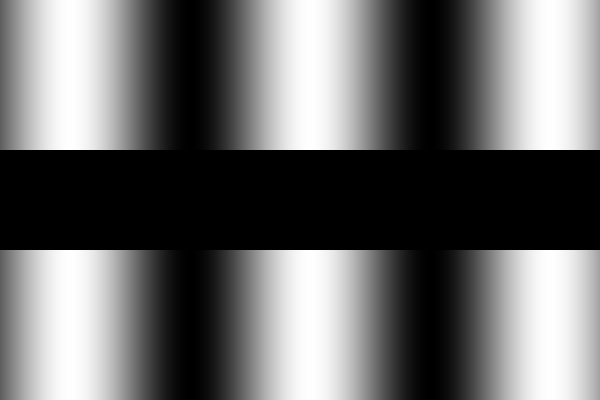
Tynan, P. & Sekuler, R. (1975). Moving visual phantoms: A new contour completion effect. Science, 188, 951-952.
Flickering phantoms
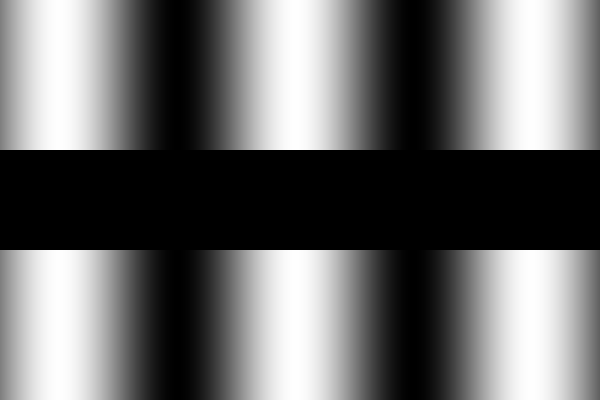
Genter, C. R. II. & Weisstein, N. (1981). Flickering phantoms: A motion illusion without motion. Vision Research, 21, 963-966.
Stationary phantoms
(dark phantoms)
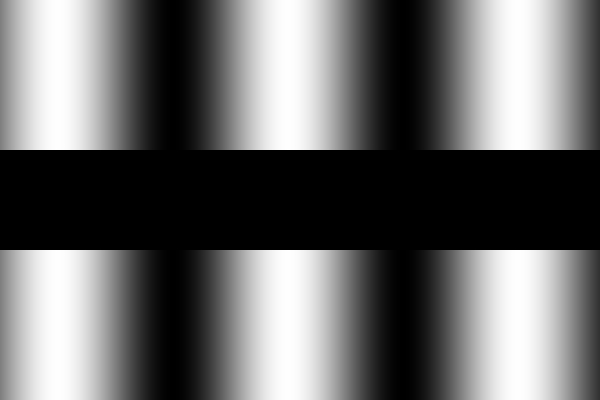
Gyoba, J. (1983). Stationary phantoms: A completion effect without motion and flicker. Vision Research, 23, 205-211.
Contrast characteristics
Stationary phantoms are clear when the inducing grating is of low contrast.

Spatial frequency characteristic
Visual phantoms are vivid when the inducing gratings are of low spatial frequency and when the occluder height is short.

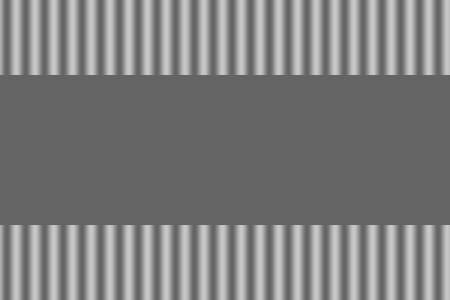
Gyoba, J. (1983). Stationary phantoms: A completion effect without motion and flicker. Vision Research, 23, 205-211.
This characteristic resembles Petter's effect

The thick vertical rectangle tends to be perceived in front of the thin horizontal rectangle.
Kitaoka, A., Gyoba, J., Sakurai, K., and Kawabata, H. (2001). Similarity between Petter's effect and visual phantoms. Perception, 30, 519-522.
Grating induction
(phenomenon related to visual phantoms)
When the luminance of the occluder is placed between the highest and lowest luminances of the grating, counterphase brightness induction appears in the occluder and gratings do not appear to be continual.
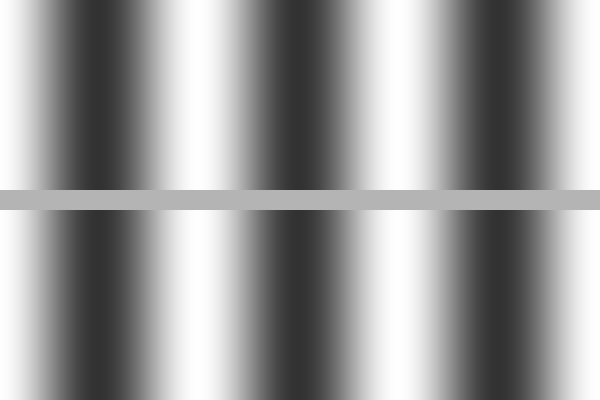
(When the cursor is placed on this image, the occluder becomes dark)
McCourt, M. E. (1982) A spatial frequency dependent grating-induction effect. Vision Research., 22, 119-134.
Question
Is the induced brightness in-phase?
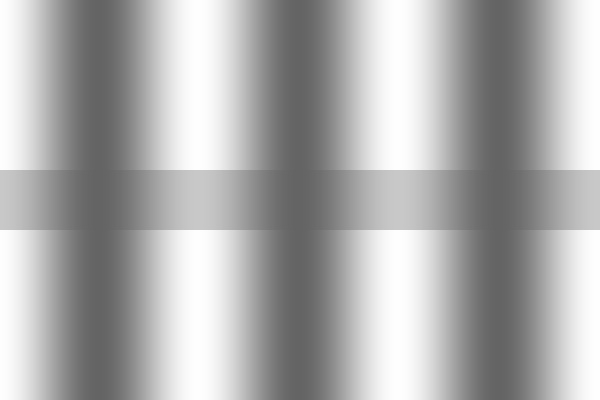
(When the cursor is placed on this image, the surround becomes homogeneous)
Dark columns appear to be continual in front. This appearance agrees with that of visual phantoms.
Is the induced brightness counterphase?
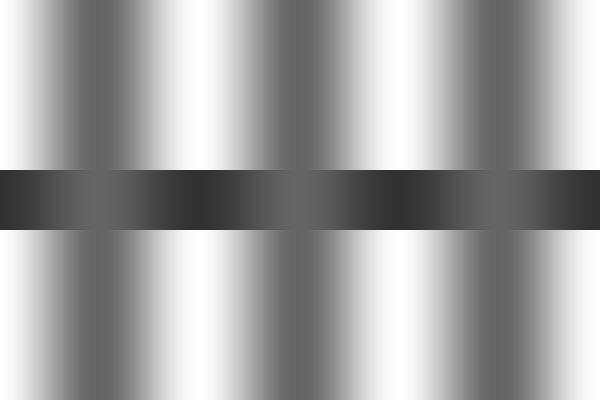
(When the cursor is placed on this image, the surround becomes homogeneous)
Dark columns appear to be continual in front. This appearance agrees with that of visual phantoms.
Finding: The brightness induction in stationary visual phantoms is not in phase but counterphase, like grating induction.
McCourt, M. (1994) Grating induction: A new explanation for stationary phantom gratings. Vision Research, 34, 1609-1617.
May, J. G., Brown, J. M. and Roberts, S. (1999) Afterimages, grating induction and illusory phantoms. Vision Research, 39, 3025-3031.
Explanation of stationary phantoms
Stationary phantoms are explained in terms of perceptual transparency, in which the surrounding grating induces counterphase lightness induction in the occluder and generates unique transparency that gives the continuation and the fixed depth of phantoms.
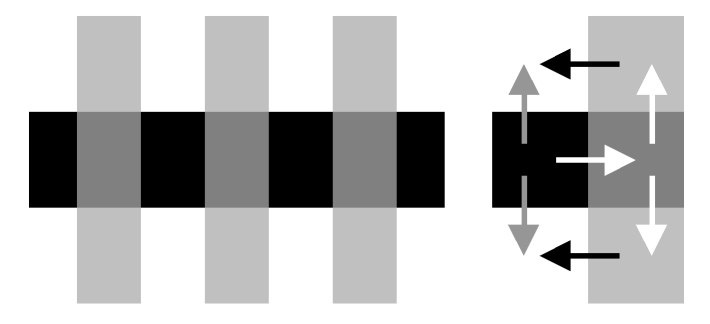
Unique transparency
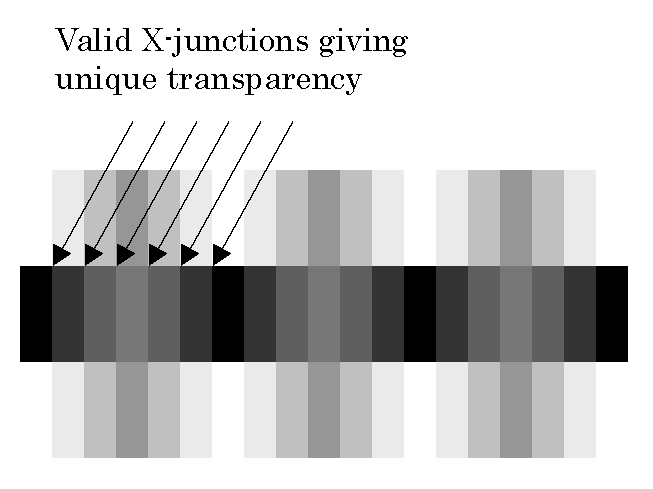
Schematic explanation using unique transparency
Kitaoka, A., Gyoba, J., Kawabata, H., and Sakurai, K. (2001). Perceptual continuation and depth in visual phantoms can be explained by perceptual transparency. Perception, 30, 959-968.
Classification of perceptual transparency
<Adelson-Anandan-Anderson's X-junction model>
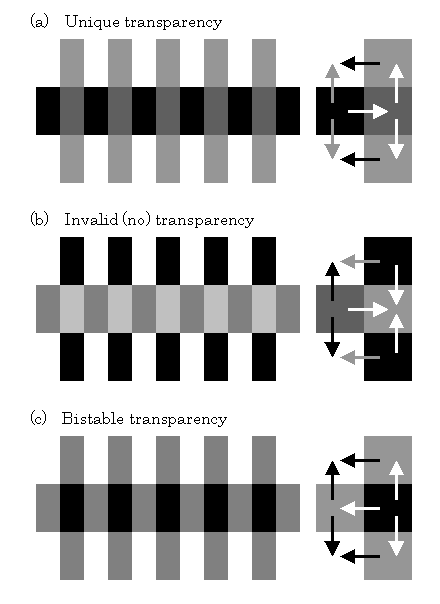
(a) Unique transparency that follows Metelli's (1974) formula, in which
gray bars are seen transparent and perceived as if they were located in
front of the horizontal black occluder. Since the apparent depth order
is unique, this type is called unique transparency. (b) The figure invalid
for transparency. (c) Bistable transparency, in which the vertical grating
can be seen either in front of or behind the occluder. Arrows indicate
contrast polarity ("lighter than").
Adelson, E. H., & Anandan, P. (1990). Ordinal characteristics of transparency.
Paper presented at the AAAI-90 Workshop on Qualitative Vision, July 29,
1990, Boston, MA.
Anderson, B. L. (1997). A theory of illusory lightness and transparency
in monocular and binocular images: the role of contour junctions. Perception, 26, 419-453.
Kitaoka, A. (2005) A new explanation of perceptual transparency connecting the X-junction contrast-polarity model with the luminance-based arithmetic model.. Japanese Psychological Research, 47, 175-187.
Kitaoka, A., Gyoba, J., Kawabata, H., and Sakurai, K. (2001). Perceptual continuation and depth in visual phantoms can be explained by perceptual transparency. Perception, 30, 959-968.
Two-stage model
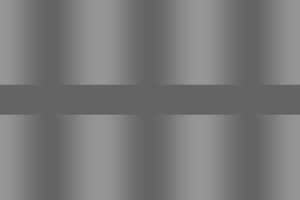
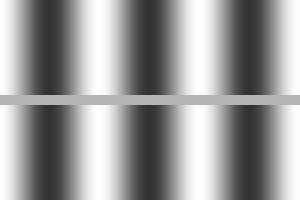


Kitaoka, A., Gyoba, J., Kawabata, H., and Sakurai, K. (2001). Perceptual continuation and depth in visual phantoms can be explained by perceptual transparency. Perception, 30, 959-968. ("Scotopic phantoms" are stationary phantoms)
Our claim: The characteristics1) of visual phantoms can be explained with perceptual transparency2) in which transparent layers appear to bridge over the occluder.
1) Phantoms always appear to be continual in front of the occluder.
2) Unique transparency in this case.
Mixed phantoms
(combibation of dark and light phantoms)
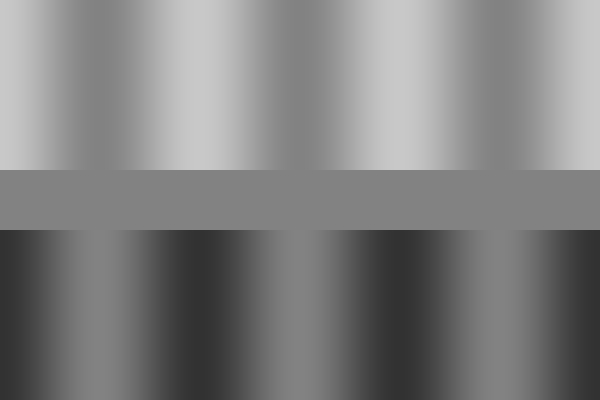
Phantoms appear, though luminance phases are not aligned.
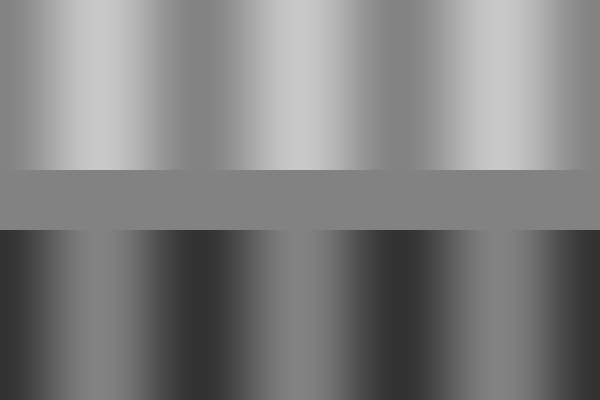
Phantoms do not appear, though luminance phases are aligned.
This phenomenon fits the two-stage model.
Contrast modulation-induced phantoms
(Second-order phantoms at isoluminance)
Low-contrast parts appear to be in front like mist and bridge over the occluder.

(Second-order phantoms)

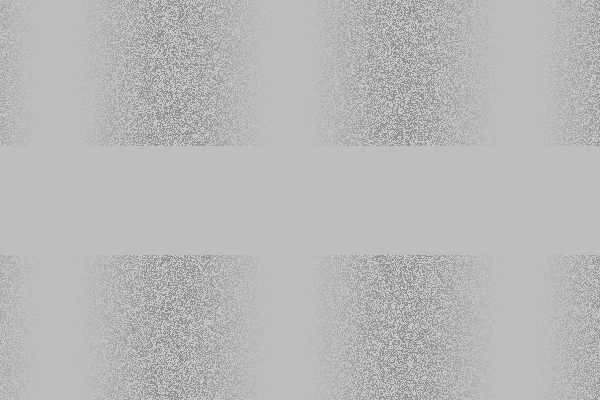
This phenomenon accords with the transparency model
since low contrast suggests the involvement of transparent layers, as shown
below.
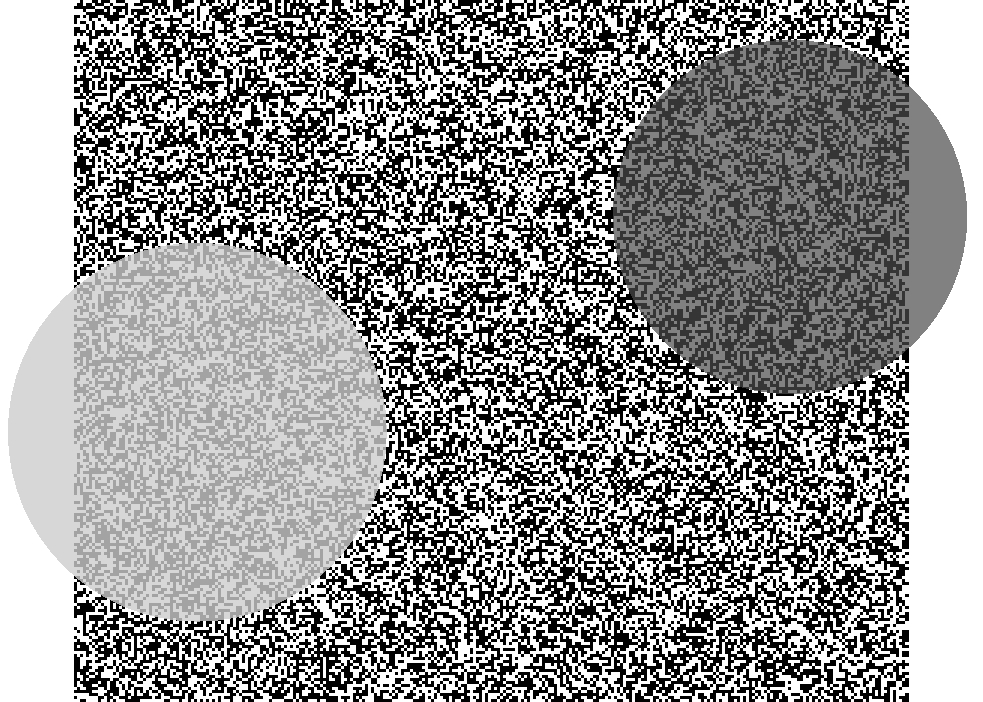
Gyoba, J., Sasaki, H., & Sakurai, K. (2000) Visual phantoms can be produced by second-order gratings. Investigative Ophthalmology and Visual Science, 41(4), S228.
Sakurai, K., Kawabata, H., Sasaki, H. and Kitaoka, A. (2000) Effects of occluder luminance on appearance of moving visual phantoms induced by second-order components. Investigative Ophthalmology and Visual Science, 41(4), S228, Abstract 1199.
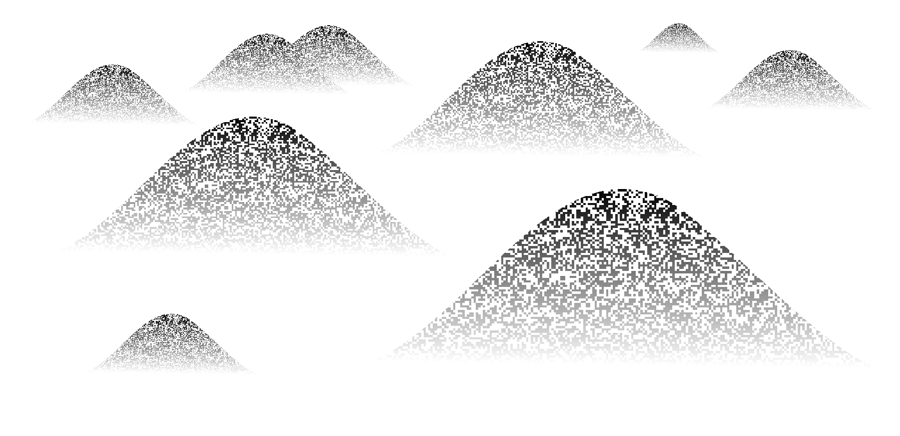
"Sea of clouds"
There appears to be a sea of clouds.
Copyright Akiyoshi Kitaoka 2016 (July 20)
Our claim (again): The characteristics of visual phantoms can be explained with perceptual transparency in which transparent layers appear to bridge over the occluder.
Mixed phantoms
(combination of dark phantoms and contrast-modulation-induced phantoms)
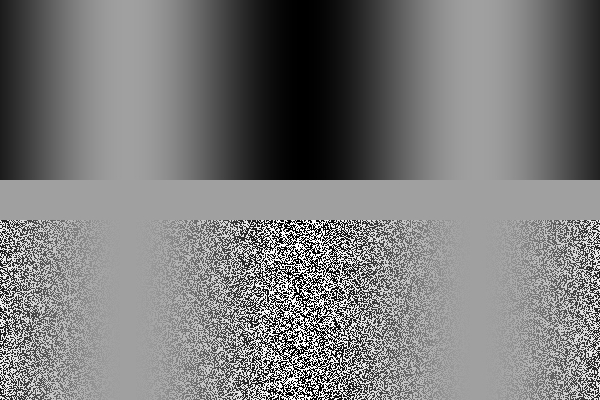
This phenomenon accords with the transparency model.
Photopic phantoms
Illusory gratings in phase with the inducing ones appear behind the occluder.

Kitaoka, A., Gyoba, J., & Kawabata, H. (1999). Photopic visual phantom illusion: its common and unique characteristics as a completion effect. Perception, 28, 825-834.
Photopic phantoms involves bistable transparency.
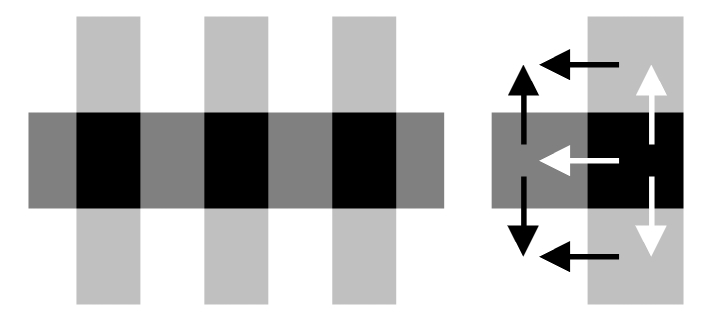
Bistable transparency
Two-stage model (again)




Kitaoka, A., Gyoba, J., Kawabata, H., and Sakurai, K. (2001). Perceptual continuation and depth in visual phantoms can be explained by perceptual transparency. Perception, 30, 959-968. ("Scotopic phantoms" are stationary phantoms)
Stereoscopic enhancement of photopic phantoms
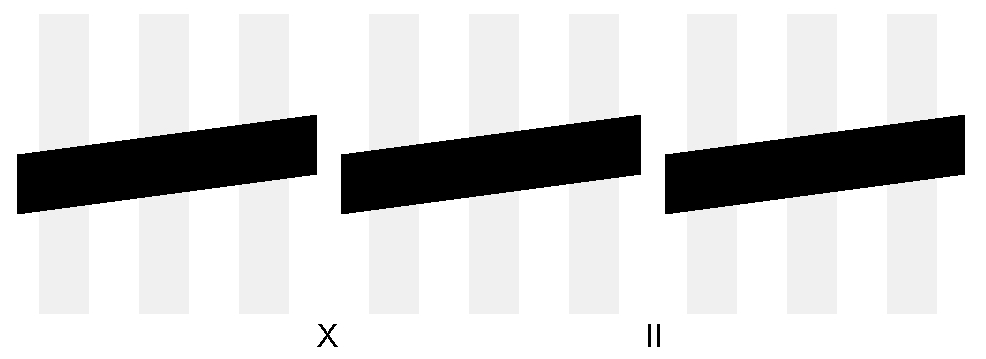
Since photopic phantoms are bistable in transparency, phantoms can be perceived to be transparent and continual in front of the black occluder with the help of binocular stereopsis.
Neon phantoms
Thin gratings give visual phantoms in phase.

Kitaoka, A., Gyoba, J., Kawabata, H., and Sakurai, K. (2001) Two competing mechanisms underlying neon color spreading, visual phantoms and grating induction. Vision Research, 41, 2347-2354.
Looks like neon color spreading
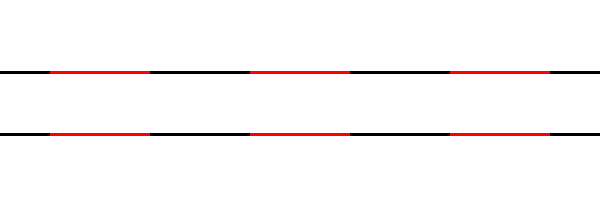
cf. neon color spreading
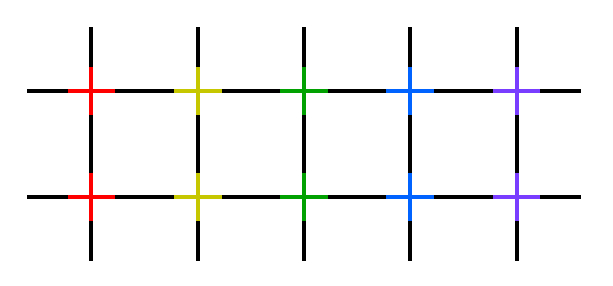
Looks like pincushion grid illusion
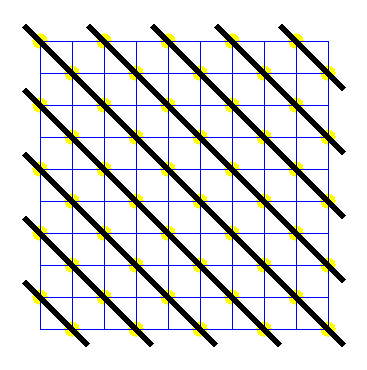
Illusory yellow lines appear to run obliquely over the homogeneously white background.
Copyright Akiyoshi Kitaoka 2001
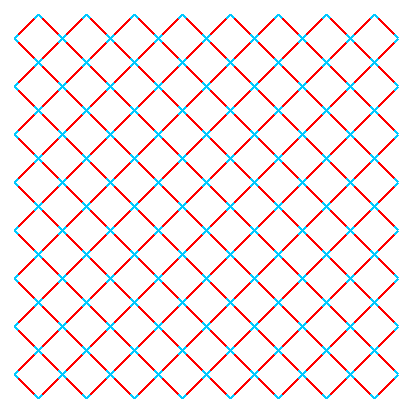
"Pincushion grid illusion1) of neon color spreading"2)
Illusory light-blue lines appear to run vertically or horizontally over the homogeneously white background. I think this phenomenon is closely related to "Spinnwebfaden"3) or "colored street"4).
Copyright Akiyoshi Kitaoka 2001
1) Schachar, R. A. (1976). The "pincushion grid" illusion. Science, 192, 389-390.
2) Kitaoka, A. (2001). Illusion designology (7): Illusory light perception that cannot be explained by the Fourier analysis. Nikkei Science, 31(8), 66-68 (in Japanese).
3) Prandtl, A. (1927). Uber gleichsinnege Induktion und die Lichtverteilung in gitterartigen Mustern. Zeitschrift fur Sinnesphysiologie, 58, 263-307.
4) Redies, C., Spillmann, L. and Kunz, K. (1984). Colored neon flanks and line gap enhancement. Vision Research, 24, 1301-1309.
Pincushion grid illusion of neon color spreading
Anderson illusion and phantoms
Close relationship to the Anderson illusion
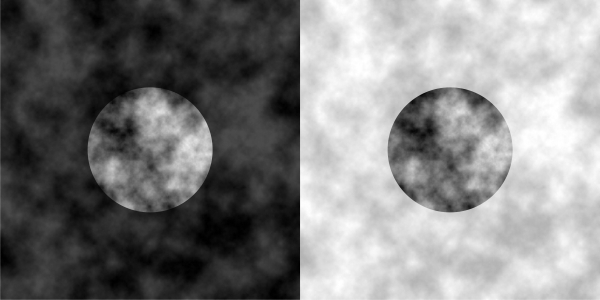
Anderson illusion:
The left disk appears to be white whereas the right one black, though
they are quite the same.
Anderson, B. L. and Winawer, J. (2005) Image segmentation and lightness perception. Nature, 434, 79-83.
Wollschläger, D. and Anderson, B.L. (2009) The role of layered scene representations in color appearance. Current Biology, 19, 430-435.
A demo of the Anderson illusion
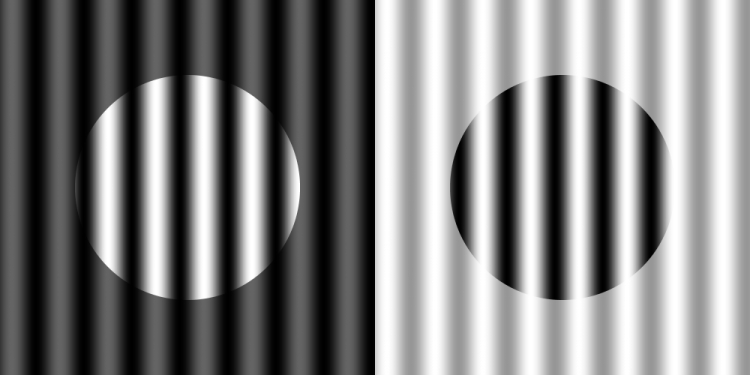
A demo of the Anderson illusion
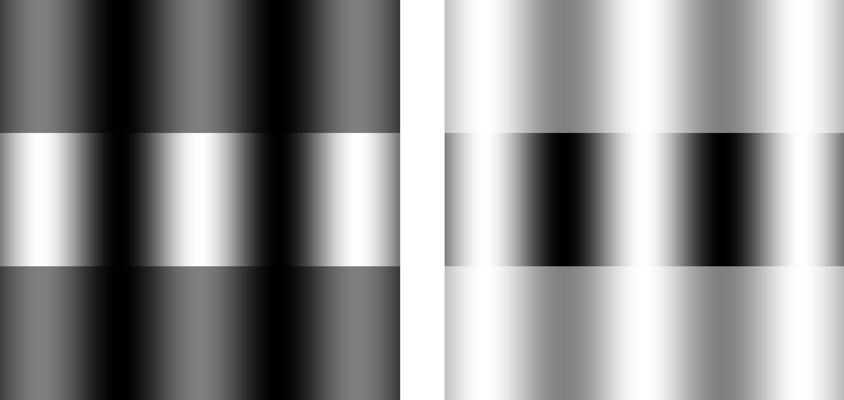
Change in position of gratings
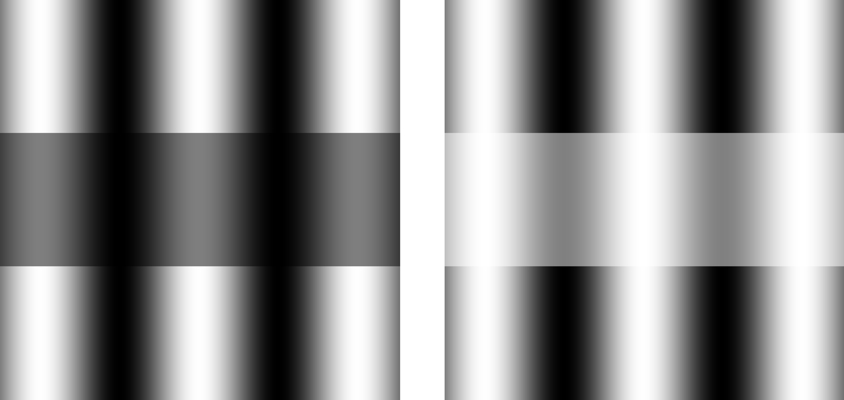
Dark phantoms and light phantoms
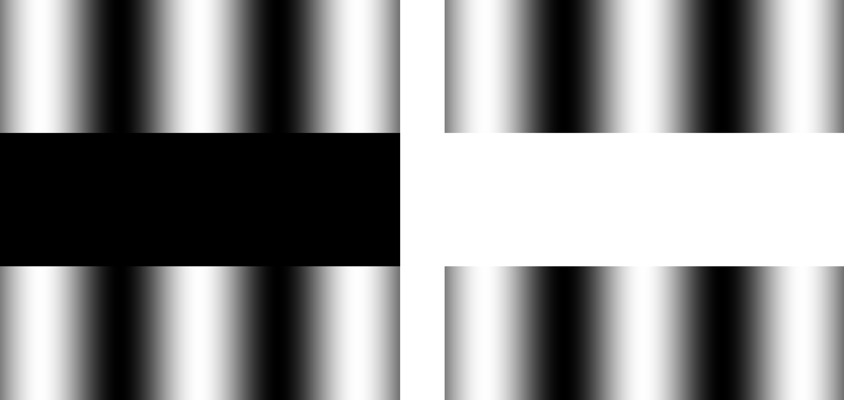
Continuation between the Anderson illusion and visual phantoms is suggested.
Summary. The visual phantom illusion is explained with not only brightness induction but also perceptual transparency (Kitaoka, Gyoba and Sakurai, 2006). If induced brightness in the occluder is in phase of the inducing grating, bistable transparency works. This type of phenomenon is observed in ‘photopic’ phantoms (Kitaoka, Gyoba and Kawabata, 1999) or possibly in moving visual phantoms. If induced brightness in the occluder is counterphase of the inducing grating, unique transparency governs. This type of phenomenon is embedded in stationary phantoms (Gyoba, 1983; Gyoba and Sakurai, 1985) that shares the same brightness induction effect as the grating induction (McCourt, 1982). Further research on visual phantoms has suggested a close relationship to some brightness/lightness illusions that are supposed to be based upon figure-ground segregation, e.g. the Anderson illusion (Anderson and Winawer, 2005)..
Thank you !
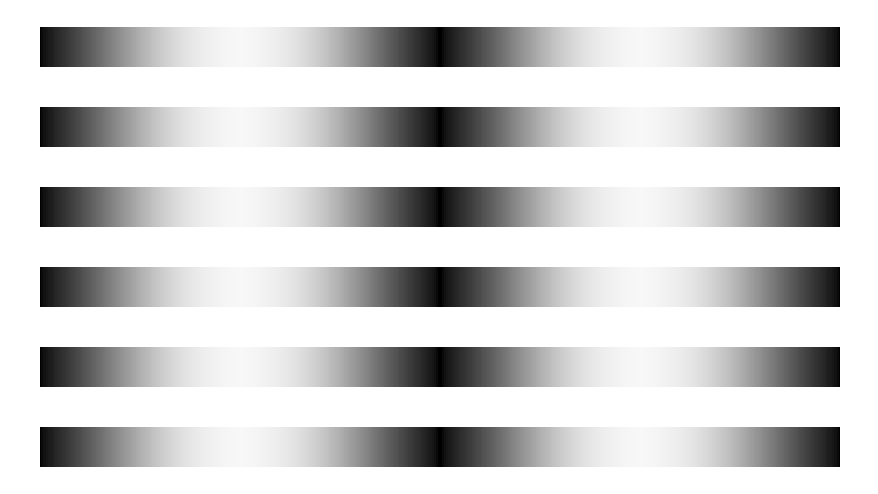
Other related topics
Craik-O'Brien-Cornsweet phantoms
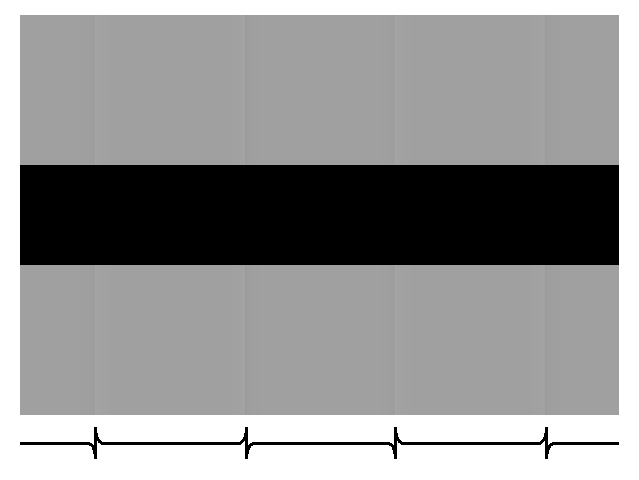
In-phase phantoms are observed behind the occluder though inducing gratings are nearly homogeneous.
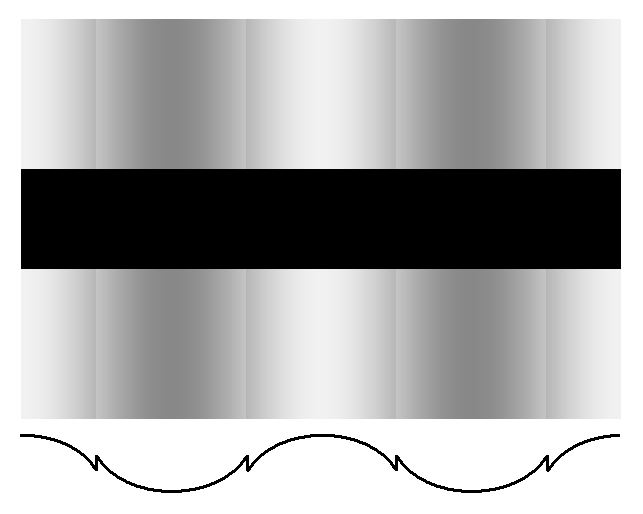
Phantoms are in phase with perceived lightness, not luminance.
Stereoscopic enhancement of dark and light phantoms
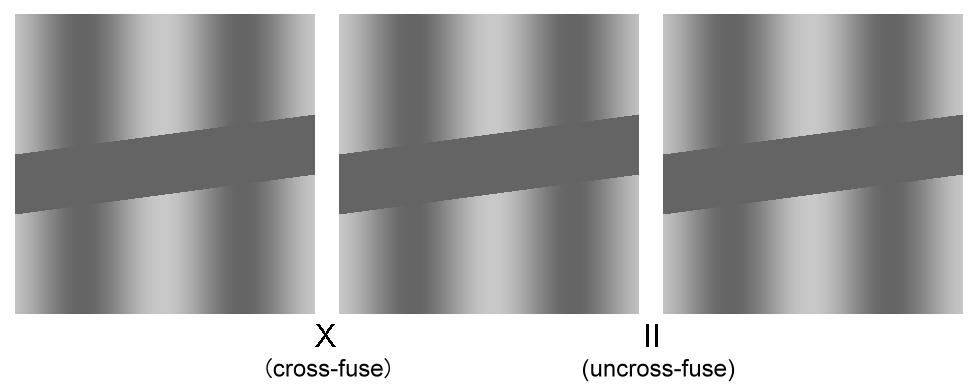
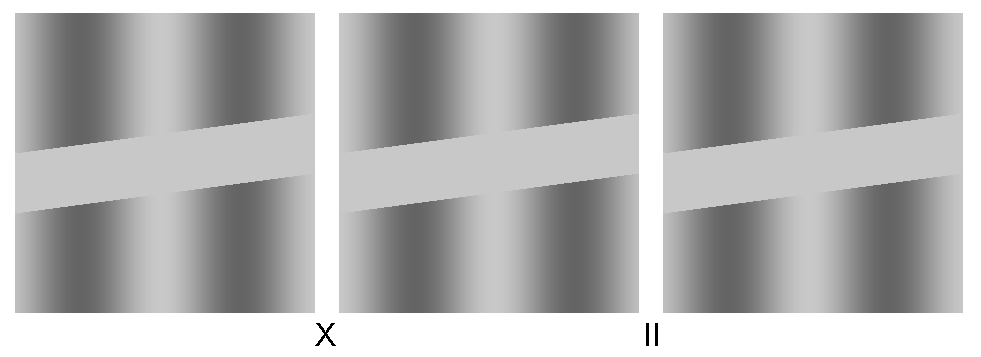
Stereoscopic enhancement of contrast-modulation-induced phantoms
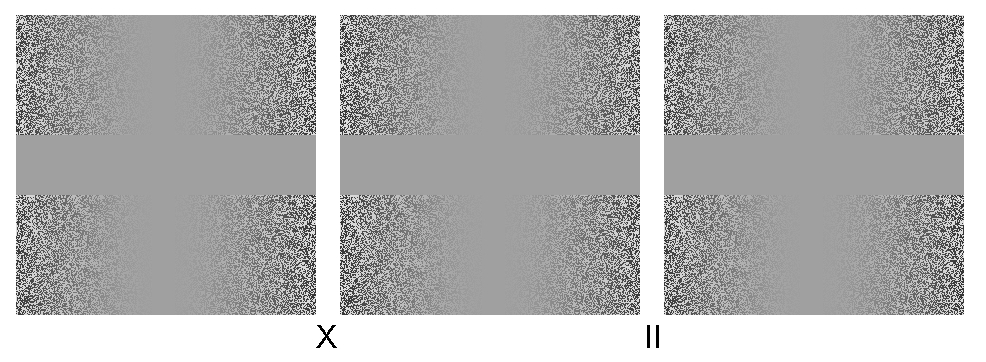
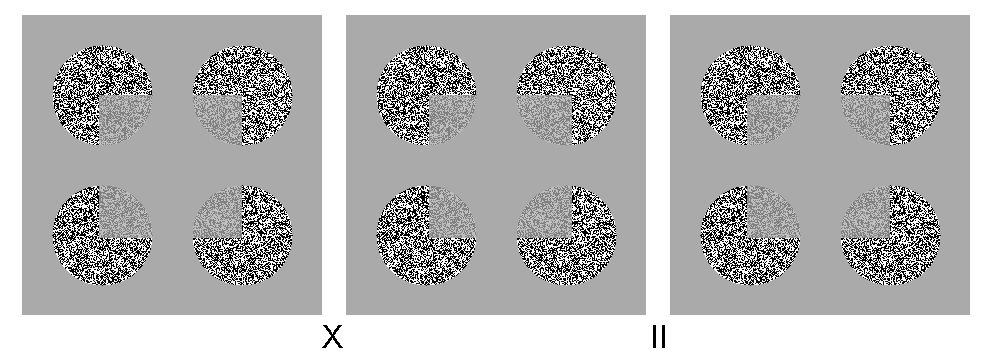
Light phantoms and Zavagno's glare effect

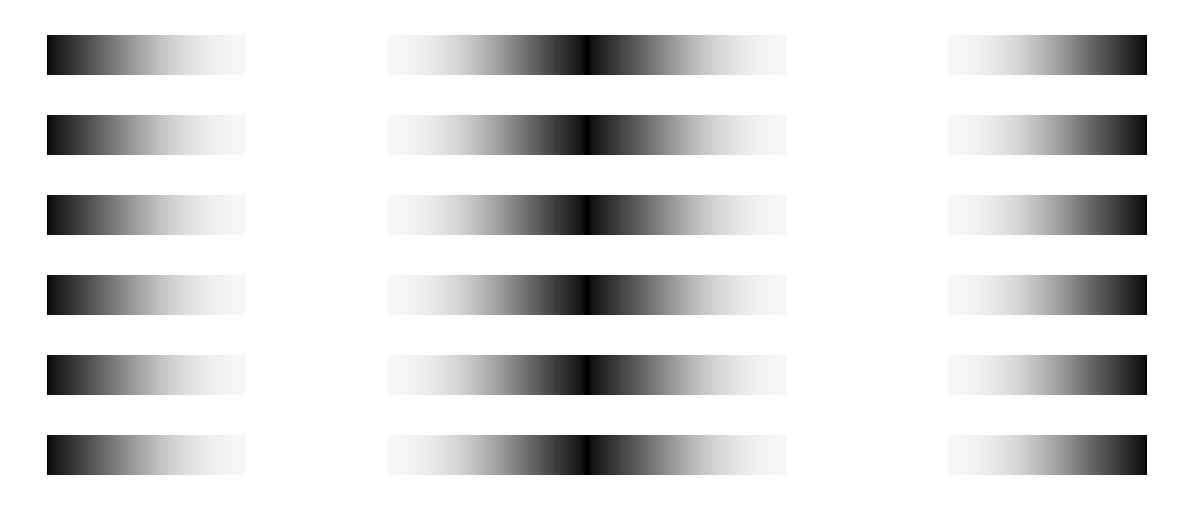
Note that the glare is brighter at a glance than the non-glare white parts, but the glare actually appears to be darker when observed locally.
cf.

Glare effect
The center appears to glare though the luminance is the same as the surround.
Zavagno, D. (1999) Some new luminance-gradient effects. Perception, 28, 835-838.
Square-wave visual phantoms and Kanizsa figures
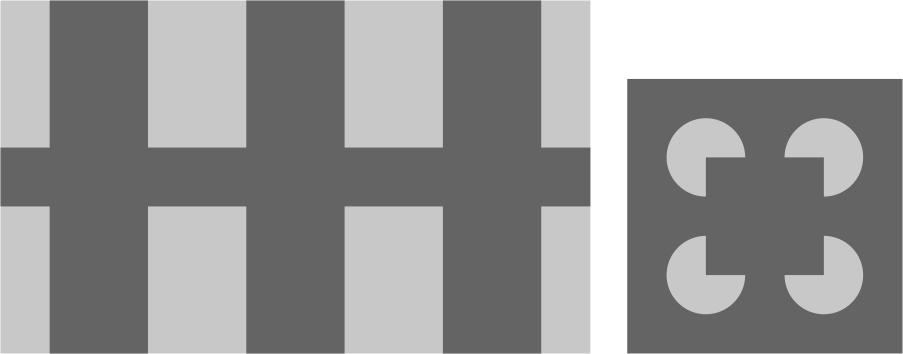
Left panel: Dark phantoms appear in front. Right panel: A dark illusory square appears in front.
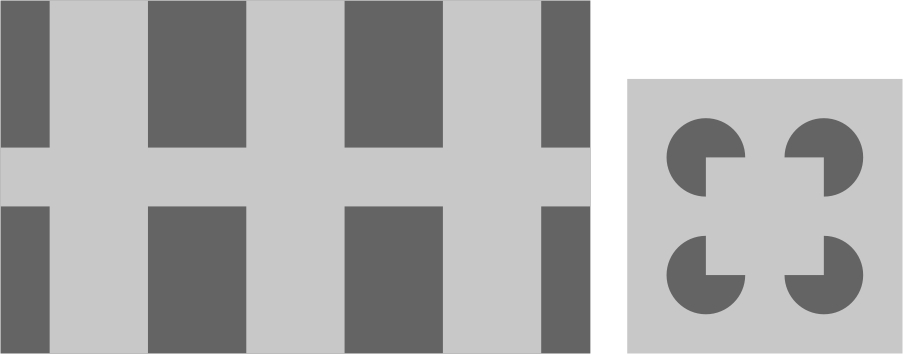
Left panel: Light phantoms appear in front. Right panel: A light illusory square appears in front.
Gyoba, J. (1983). Stationary phantoms: A completion effect without motion and flicker. Vision Research, 23, 205-211.
Sine-wave Kanizsa figures and visual phantoms
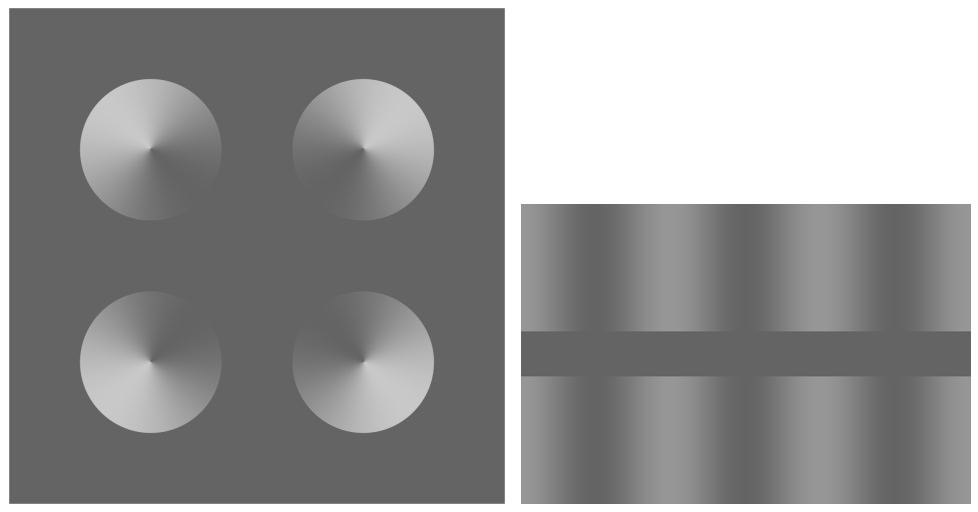
Left panel: Dark illusory mist appear in front. Right panel: Dark phantoms appears in front.
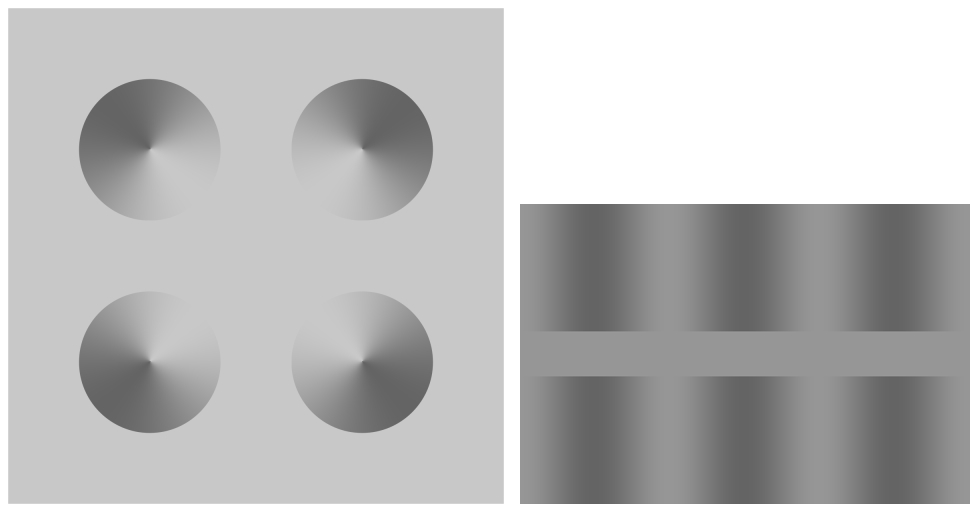
Left panel: Light illusory mist appear in front. Right panel: Light phantoms appears in front.
Kitaoka, A., Gyoba, J., and Sakurai, K. (2006). Chapter 13 The visual phantom illusion: a perceptual product of surface completion depending on brightness and contrast. Progress in Brain Research, 154 (Visual Perception Part 1), 247-262. PDF
<added: August 29, 2016>